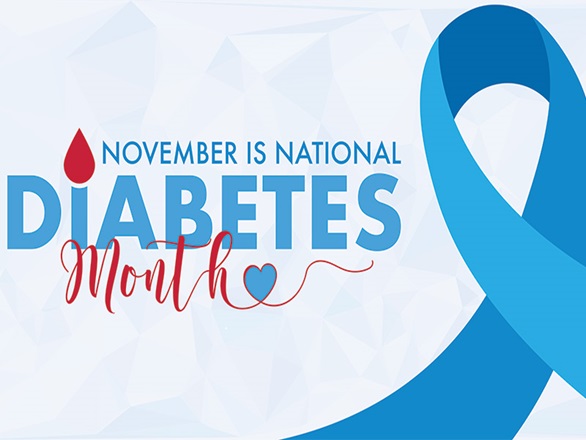In this edition
- How Small Business Ownership
Fuels Healthy Aging
- National Peanut Butter Lover's Month
- American Diabetes Month
- World Kindness Day 2024
About the Newsletter
With fall arriving, read about how World Kindness Day is coming up and how it's American Diabetes Month. For all the peanut butter lovers, this article will mention how this month is also National Peanut Butter Lovers Month. When reading, you may learn some peanut butter recipes and why it can be good for you.
How Small Business Ownership
Fuels Healthy Aging
By Michael Bindrup, M.B.A.
Good news – owning a small business is a healthy way to age. Contrary to some beliefs, being a business owner is not just for the young and daring. It is for individuals who want to keep their minds active and improve their lives. Let's look at some of the trends and how owning a small business affects aging Americans.
The rise of older entrepreneurs – As our society’s make-up changes and life expectancies climb, we see a rise in older business owners. In the U.S., businesses created by individuals aged 50 and above are rapidly growing. Here are a few interesting facts on this trend:
Careers in Aging

The power of the 50+: According to the U.S. Small Business Administration (SBA), individuals aged 50 and older make up a large portion of new businesses, in areas of technology to retail. The SBA reports that about 23% of all business owners in the U.S. are 55 to 64 years old and about 15% are aged 65 and above.
Continued contribution: Starting a business allows older adults options beyond the normal retirement age. Business ownership is their way to financial security, personal success and healthier aging. Reports show that the group aged 55 to 64 are currently the largest group of new business owners, adding to the spirit and innovation driving our nation's economy.
The Edge: How Small Business Ownership Fosters Healthy Aging – Let’s explore the advantages of owning a small
business for those that are older, supporting their mental strength and overall well-being:
Mental exercises: Running a small business provides a mental workout. It requires creativity, problem-solving and
adaptability. When creating new policies or following the ups and downs of the stock market, business owners must challenge their mental abilities, promoting new brain connections and developing their ability to adapt.
Social relationship: Small businesses provide places for social interaction. Owners make social connections with customers and suppliers. They work with their employees. These are all important contacts for healthy aging. Studies show links between socializing and brain health, as building relationships helps strengthen our mental ability as we age.
Sense of purpose: Small business ownership creates a sense of purpose and independence — challenging the feelings of retirement. Owners find a new energy and a purpose in their lives, offering a sense of purpose that goes beyond the limits of our ages.
Adaptability and resilience: Businesses need to be able to adapt, which becomes even more valuable over time. Business owners must also be strong, which is so important in handling life's challenges and setbacks.
Financial security: Small business ownership can offer a path to financial security and independence. Successful businesses offer added income and assets, which often allows owners a way to reduce the financial risks found with aging, healthcare costs and savings.
It's all about embracing the journey – Owning a small business isn't just a new career; it's a new lifestyle. Each of us is given the gift of time—a chance to try something different and leave a mark on the world. Embrace the journey, discover the power of owning your own business and enjoy a path toward healthy aging and a fulfilling life. After all, age is just a number—the best measure of age lies in the human spirit.
AARP Article about Success with Businesses Ran by Older Adults
NATIONAL PEANUT BUTTER LOVER’S MONTH

Peanut butter is one of America’s favorite foods and is considered by many to be a staple like bread and milk. A St. Louis physician devised it in 1890 for older and frail patients with bad teeth who couldn’t chew. It was an easily
swallowed, easily digested, high-protein food. Peanut butter is also high in B vitamins, phosphorus, magnesium and iron. About 75% or more of its high-calorie count comes from fat and can be high in sodium.
Stick to small servings of peanut butter. Two tablespoons is plenty for a
sandwich, providing 188 calories with 16 grams of fat. When added to two
slices of whole wheat bread and two tablespoons of jelly, the calorie count
rises to 428, with 38% of the calories coming from fat. Reducing the peanut
butter to one tablespoon and substituting half a medium banana for the jellywill produce a sandwich with 284 calories and 10 grams of fat (or 32% of the calories from fat). Try these ideas and recipes for using peanut butter.
No-Bake Peanut Butter Cookies
8 whole-wheat graham cracker squares, finely ground
¼ cup raisins
¼ cup smooth natural peanut butter
2 tablespoons plus 2 teaspoons honey
4 teaspoons unsweetened coconut
Combine ground whole-wheat graham crackers, raisins, peanut butter and honey in a small bowl. Pat into 8 cookies and press lightly in coconut. Makes 4 servings, 2 cookies each.
TRY NEW COMBINATIONS with Peanut Butter on Bread:
Jelly
Sliced bananas
Honey
Thinly sliced apples
Granola
Sliced dill pickles
Thin, diagonally sliced carrots
Homemade Peanut Butter Cups by AARP
American Diabetes Month
Peanut butter can be part of a healthy diet for people with diabetes, but it should be eaten in moderation because it's high in calories. The American Diabetes Association, Dietary Guidelines for Americans, and American Heart
Association all recommend peanuts and peanut butter as good choices for people with diabetes.
Natural peanut butter is considered safe for people with diabetes. It's best to avoid the “low-fat” varieties of peanut butter. They sound healthy — but most brands add more sugar to make up for less fat. This can spike blood sugar levels and lead to more daily carbohydrates.

Peanuts are a good source of magnesium. Many people with Type 2 diabetes have low magnesium levels. A diet high in magnesium may also offer protective benefits against diabetes. Everyone can benefit from eating foods that are rich in nutrients. Peanut butter provides protein and a range of vitamins and minerals.
Two tablespoons - 32 grams (g)- of chunk-style peanut butter with salt contains the following:
calories 188 | protein 7.7 g | carbohydrates: 6.9 g including sugar (2.6 g) and fiber (2.7 g) | saturated fat: 2.4 g
unsaturated fat 7.4 g | monosaturated fat 4.5 g | calcium: 14 milligrams (mg) | iron: 0.6 mg
magnesium 51 mg | phosphorus 102 mg | potassium 238 mg | sodium 156 mg | zinc 0.9 mg.
It also contains B vitamins, especially niacin, folate and vitamins E and K.
Healthy Eating Tips for Diabetes
World Kindness Day

World Kindness Day 2024 is a global observance dedicated to promoting and celebrating acts of kindness. It encourages people to do random acts of kindness and fosters a culture of compassion and generosity. Each year, it falls on Nov. 13. This year, it falls on a Wednesday, allowing people to share acts of kindness and goodwill all week.


